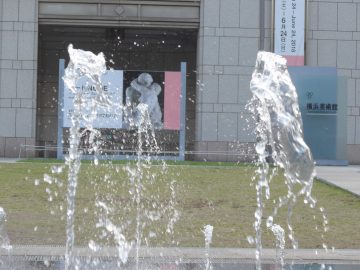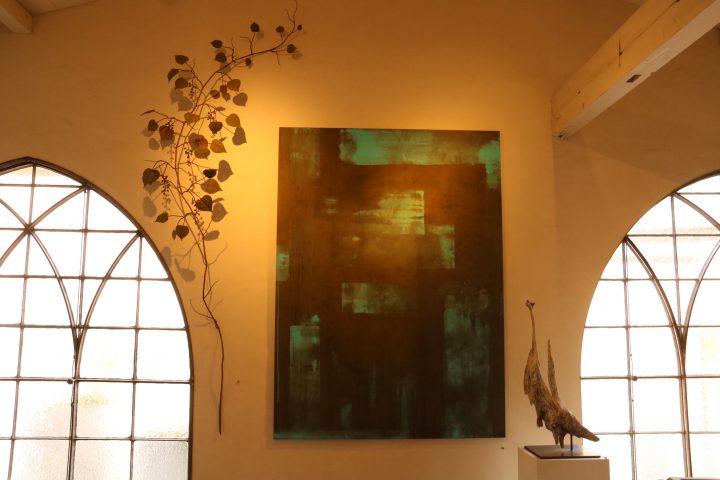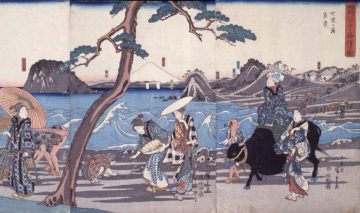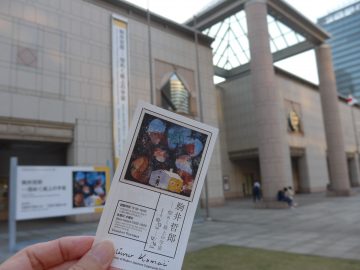Young talent from Fujisawa: The past and future of FAS (FAS)

Fujisawa City Art Space (FAS) opened in 2015 in a commercial facility at the north exit of Tsujido Station. The only public art space in Fujisawa City other than the city gallery, the museum is a rare facility in Japan that has a permanent residence room where artists can stay and create their work, in addition to exhibition rooms and workshop rooms. We spoke with Sugimoto Satoko and Takegami Sanae, art specialists at the museum, about the hidden potential of Fujisawa City, which has made a name for itself as a cultural city.
Interview & Text: Mana Saito
An "art scene" emerges in a town that didn't have a museum
-I heard that FAS took inspiration from sister cities in the United States.
Sugimoto : When the current mayor, Tsuneo Suzuki, visited our sister city Miami Beach, he visited a local art center and found an artist who was working there as a resident. Fujisawa City did not originally have an art museum or museum, so we wanted to create a facility in Fujisawa where we could interact with these young artists, and we decided to create an art facility with the establishment of a residence room as one of the concepts. I think it is a special place where you can't find an exhibition room and a studio for resident artists side by side. The three pillars are open studios, exhibitions, and events in the workshop room.
-Have there been any efforts to create a contemporary art facility before?
Sugimoto : I think the first time Fujisawa City seriously dealt with contemporary art was in 2014 when it featured young artists in a project called "Fujisawa City 30 Days Art Museum" held annually at the Civic Gallery. Until then, it featured famous deceased artists and architects with ties to Fujisawa, but this time it was an attempt to have seven young artists with ties to the city create and exhibit works inspired by "Enoshima Ukiyo-e" owned by Fujisawa City. I think this exhibition was also one of the triggers.

Kosuke Yoneyama, Enoshima (2014), 2014
I grew up in Fujisawa from a young age, but there were few places to see or display art in the city. There are a few galleries, but there were no opportunities to see large-scale works like those seen in large museums, so everyone is happy that they can now see installation works and three-dimensional works that use large spaces.
-How did you choose the location in front of Tsujido Station?
Sugimoto : Even within Fujisawa, Tsujido in particular is a town in the midst of rapid development. Originally, the Tsujido area lacked cultural and artistic facilities, so building a new art museum or museum would be a big deal. However, I think they thought it would be more likely to happen if they built it in an existing office building that had just been built in the reborn Tsujido area.
—Because it was inside an office building, were there any special things you had to think about?
Sugimoto : By having them create their works in residence, we get to see them on a daily basis, and many of the artists have experience doing residencies in a variety of places and feel that they need to be able to exhibit their work anywhere, so we haven't had much trouble exhibiting our work so far.
As a base for communicating with the outside world

Satoshi Uchiyama, "to turn back", 2015
-What do you pay attention to when planning an exhibition and selecting artists?
Sugimoto : Last year, a total of 17 artists exhibited, all of whom were young artists with some kind of connection to Fujisawa. Since it was the first year and we also aim to nurture and support young artists, we have as many young artists as possible use the space to create a place for interaction and exchange of opinions. When we looked into it, we found that there are a lot of young artists with ties to Fujisawa, and we don't think we would have been able to see these things without this space. Our colleagues who work at other art facilities also told us that it was good to have a place where they could discover young artists in the Shonan area, as it had been difficult to research young artists in Fujisawa and Kanagawa Prefecture until now.
We also want local artists to not just stop at FAS, but to have a place where they can take off as a hub and connect with the outside world. Until now, there was no such place, so it seems that Fujisawa artists often went outside the city on their own. We also hope that it will become a place like a port where they can return even if they go out.
We are planning to start an open exhibition this year, which will not only be limited to Fujisawa City, but will also be open to people from overseas who live in Japan. I am looking forward to the start of a diverse cultural exchange.
Fujisawa is a city with a rich industry and many different companies, so we are also thinking about building connections. This year's competition includes a collaboration project with 8hotel, a hotel in the city, and the winner of the 8hotel Award, one of the four winners, will be able to create and present a work in the "8DAYS A WEEK" project, which is renovating the guest rooms of 8hotel with art.
In addition, directly above here on the 7th floor, the Fujisawa Ukiyo-e Museum is scheduled to open in July, which will exhibit ukiyo-e prints and materials related to local history owned by Fujisawa City, and we plan to collaborate with this museum.
Communication between citizens and artists

Mariko Sase at work
-What kind of response have you received so far about the residence rooms?
Sugimoto : Many of our visitors are local residents, and they say it's very interesting and fun for them to be able to enter an artist's studio and see them up close, even though they've never been to an art studio before. However, some people worry that they might be getting in the way. It seems that artists sometimes feel they have to talk when people come in, but because visitors are considerate, they don't feel like they can't concentrate or have to talk all the time, and it seems to be going surprisingly well.
-It's a matter of compromise.
Sugimoto : High school students often come to visit us, and they ask the artists directly if they're thinking about going on to art school, and they give them very solid advice. People who create artwork as a hobby also come to the open studios and ask us questions.
- It seems like you might be reluctant to work on a clean white floor...
Sugimoto : There are artists who care and artists who don't (laughs). Right now there are just the two of us so it's pretty neat, but last time there were four of us staying and it was a bit messy.
At first, it was too clean and difficult to use, but little by little, traces of the past are being left behind, so it may be gradually becoming easier to use. It depends on the production style, but there are fewer walls than I expected, so I think that as a facility, we need to think about how to improve any parts that are difficult to use, such as when painting large paintings.
-Is there anything you do to devise a system for operating it?
Sugimoto : We didn't have any special partitions in the space, so when one of us was sculpting and scattering powder, we all discussed how to divide the space. To prevent any misalignments from happening, we decided to meet once every two months starting about six months ago.

Satomi Uchida's production scene
Memorable seaside scenery

Shunpei Minagawa, "Drifting House" 2016
-Are there any works that could only have been created in this space?
Sugimoto : In the previous "Discovery/Rediscovery" exhibition, Shunpei Minagawa, who lives in Nikko City, worked on the project while commuting back and forth between his family home in Fujisawa, and for his work "Drifting House," he brought scrap materials from Nikko and assembled them here. He said he created a scene with shacks, which were common in Tsujido when he was a child. It may seem unusual to people who have recently moved to Tsujido, but to him, this is one of the nostalgic, original landscapes of Fujisawa.
Naoya Ishikawa, who lives in Enoshima, used familiar objects as his motifs. In his workshop, "Turn a simple rock into a jewel?", participants polished rocks they picked up in Enoshima and pieces of his own sculptures. In the exhibition showcasing the results of their stay, rocks polished by the sea that were picked up in the sea were displayed alongside rocks polished by workshop participants.
Satomi Uchida lives in Yokosuka, and during her residency she was able to see Mount Fuji and was close to the sea, so she was very conscious of these factors and reflected them in her work.
Thinking about it, perhaps everyone is somewhat conscious of the seascape after all. Also, it seems that sometimes, they received feedback from other artists during the production process and realized something for the first time, which led to their work.
Calm blue and tranquil

Yuko Matsuzawa, Beat, 2016
-How was this special exhibition, "Scenes Here - From Four Small Rooms," planned?
Takegami : With the theme of "scenery" in mind, I chose two artists who work on two-dimensional art, and one artist who works on sculpture and installation art, with the aim of covering a variety of genres. This time, they are not creating works here because the previous exhibition also used the residence room, and it is the time of the change of fiscal year, but they are all enthusiastic and motivated artists, and they said they wanted to create new works, so some of them were created especially for this exhibition. The works are made using a variety of materials, including materials used in Japanese painting, indigo, ceramics, and leaf veins.
It was by chance that the overall color scheme turned out to be blue, but it gave the space a sense of unity, and I feel that there is a sense of serenity throughout the space that I hadn't imagined when I was planning it. I think that each visitor has a different sensibility, so I hope that they will experience it in a variety of ways.
Starting this year, we have a monthly event program, and in May we held a performance at the exhibition hall as a related event to the special exhibition. This was the first attempt to attract people who are interested in music and dance, and to help them learn about this facility. In the future, in addition to exhibition-related events, we plan to hold one workshop, lecture, or symposium per month.



